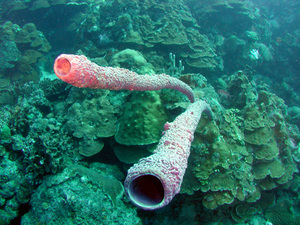Major breakthroughs are expected by 2010 in the country's ambitious space programs - from manned flights to the lunar probe - a senior space administrator said Thursday. Scientists are working toward astronaut space walks, and spacecraft rendezvous and docking procedures by the end of the decade, said Sun Laiyan, chief of the China National Space Administration. The deep space exploration program aims to achieve the first phase goal of the lunar probe, which is to have the orbiter Chang'e I circle the moon, he said.

|
| ©Unknown
|
| The current indigenously-developed Long March series of rockets can carry 9 tons to an orbit 300 km from Earth, or send satellites of 5 tons to a geosynchronous orbit 36,000 km away.
|
Julie Steenhuysen
ReutersMon, 15 Oct 2007 01:03 UTC
Smiles may take a while, but a horrified expression is a sure-fire attention getter, U.S. researchers said on Sunday, based on a study of how fast people process facial expressions.

|
| ©REUTERS/Vanderbilt University/Handout
|
| An undated handout photo shows a man looking fearful. New research has found that the brain processes images of fearful faces faster than images of neutral or happy faces.
|
Brad Kenney
IWMon, 01 Oct 2007 11:22 UTC
For a U.S. manufacturing community beset by energy, materials and labor costs and struggling to remain competitive in the global economy, nanotech may have a positive impact that rises far beyond its small scale.
With the California Condor already saved, genetic samples from endangered species at the Frozen Zoo will prevent extinctions all over the planet.
On a sunny spring afternoon, the San Diego Zoo is teeming with shorts-clad tourists of all ages. While most visitors gravitate toward the pandas, giraffes, and gorillas, one little boy seems particularly taken with the Javan bantengs, a species of endangered Southeast Asian wild cattle that can grow to be seven feet long and weigh nearly a ton. Asked which one is his favorite, the child sizes up each of the animals before settling on a male with a dark blue-black coat grazing closest to him. It happens to be the spitting image of another banteng that died in 1980, and the resemblance is more than superficial: The four-year-old animal at the zoo is its clone.
Polish secondary school students from Szczecin and Warsaw have discovered two new asteroids in images that were provided for them within the framework of the "International Asteroid Search Campaign." The discoveries follow a series of successes of young amateur astronomers conducting research in their schools under the supervision of their physics teachers.
A scientist has put forward the bizarre suggestion that there are two dimensions of time, not the one that we are all familiar with, and even proposed a way to test his heretical idea next year.
A new volume published by the Geological Society of America sheds light on mysterious earthquakes in the interiors of continents. These earthquakes, like those that occur in the central U.S., are what the book's editors describe as "an embarrassing stepchild of modern earthquake seismology." Continental Intraplate Earthquakes: Science, Hazard, and Policy Issues provides a comprehensive overview of these rare but very real global hazards.
The plate tectonics revolution of the 20th century elegantly explained why most earthquakes occur where they do - at Earth's plate boundaries. It didn't explain, however, the occurrence of intraplate quakes and the deformation processes that give rise to them. As a result, geologists studying areas like the central U.S., western Europe, and Australia, don't know what causes these quakes, how often they will happen in the future, and how dangerous they are.
An 85 million-year-old dinosaur skull has been found in southwestern Japan, one of the oldest discoveries of its kind in the country, the Kyodo news agency said on Saturday.
The fossilized skull, belonging to a herbivore called hadrosaurid, was unearthed on a mountain in the town of Mifune in Kumamoto prefecture, Kyodo said, quoting an official of the Mifune Dinosaur Museum.
The fossil was found in February 2004 by an amateur expert, but only identified as the skull of a hadrosaurid after a delicate cleaning process.
U.S. scientists have identified a new dinosaur species found to have populated the Grand Staircase-Escalante National Monument area in Utah.
"It was one of the most robust duck-billed dinosaurs ever," said Utah Museum of Natural History paleontologist Terry Gates. "It was a monster."
Researchers from the museum, the national monument and California's Raymond Alf Museum of Paleontology unearthed fossils of the ancient plant-eater from the rocks of the Kaiparowits Formation.



Comment: Interesting that more asteroids are being discovered and reported by students these days, don't you think?